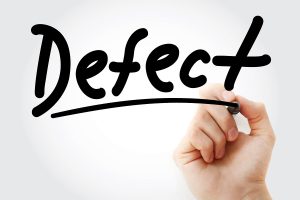What To Do When You Get Injuries From A Defective Product
 Michael Babboni
Recalls
Contrary to what many people think, injuries from defective products are more than just scary stories. These incidents happen in real life. Millions of Americans have to get medical help to attend to injuries related to product defects. The hardest thing is that you may not be able to know about it until it is too late. Toys, cribs, furniture, medical devices, gadgets, and motor vehicles are among the many products that can have defects.
Michael Babboni
Recalls
Contrary to what many people think, injuries from defective products are more than just scary stories. These incidents happen in real life. Millions of Americans have to get medical help to attend to injuries related to product defects. The hardest thing is that you may not be able to know about it until it is too late. Toys, cribs, furniture, medical devices, gadgets, and motor vehicles are among the many products that can have defects.Product Liability
Liability is the first thing to consider in a defective product injury. Who should take responsibility? Based on the law, product liability lies on the manufacturer or seller. The reason behind it is that they are the ones who brought out defective products that reached the hands of consumers. In the United States, product liability claims rely on state laws. There are three main theories of product liability lawsuits that a plaintiff can use – negligence, strict liability, and breach of warranty.
• Negligence theory focuses on the d efendant’s conduct. The plaintiff needs to prove that the defendant committed a wrongful act against him.
• Strict liability theory, also known as product liability theory, does not rely on the intention of a person. The plaintiff has to prove that the product is defective.
• Breach of warranty theory bases the lawsuit on a contract. The plaintiff must be the actual person who purchased the product.
Florida Laws
In the case of Florida, courts use the negligence theory and the strict liability theory. These two theories can overlap. However, the latter is more common.
Under Florida law, a plaintiff must prove three things.
• The product was defective.
• The consumer got injuries from the defective product.
• The consumer suffered damages.
A plaintiff can claim that the injury is due to negligence. However, he should prove it. He should also show that the responsible party failed to fulfill its duty to the victim.
Defective product claims have a statute of limitations in the state of Florida. The victim should file a case within four years from the date when the injury happened. In the case of wrongful death, the statute of limitations is two years. There may be exceptions, especially if the injury had a delayed onset or the manufacturer of the defective product offered a longer warranty period.
Types of Product Defects
Not all product defects are the same. There are three types of defects. A product that has any of these three and has caused injury can be up for a case. So, every consumer should take note of these three.
• Design
The manufacturer is responsible for such defects. Despite a good finish, their product can still endanger the consumers. In Florida, a consumer expectation test determines which product is unreasonably dangerous.
• Failure to warn
Also known as marketing defects, these occur due to some overlooked marketing tools. The problem is not on the product itself. The cause of the injury is the lack of correct instructions or warnings from the management.
• Manufacturing
The problem is on the product itself. There was no intention, but the result does not follow the intended design. This issue can pose dangers to consumers.
Hiring A Lawyer
Product liability actions and proving fault are complicated. They require a proper understanding of all legalities. Aside from the injury due to defective products, the burden of proof also lies on the plaintiff. Laws about such incidences vary from state to state. Thus, if you or a loved one is a victim of product defect, consult a St. Petersburg lawyer. These lawyers are knowledgeable of local laws and have enough experience to guide you through the legal aspect.
